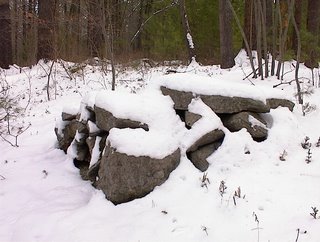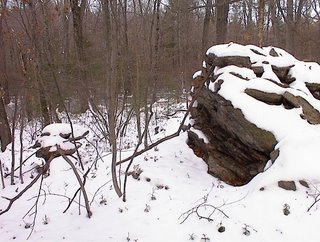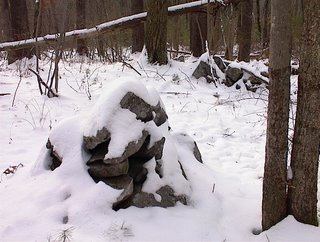



 They were from a site with a number of other distinctive features, like small pile with a space and then a larger pile:
They were from a site with a number of other distinctive features, like small pile with a space and then a larger pile: I'll say more about the site some other time.
I'll say more about the site some other time.Someone needs to hypothesize why some structures - piles and walls - needed clean faces on one side. That seems to be the main attribute of these "fishtail" piles.
1 comment :
I would like to see the piles without snow.
With regard to "clean faces on one side," I have found that a significant number of stone piles at the Parker Woodland site in Coventry, RI, have the "clean" or vertical face oriented to the east, whereas the west side is tapered and fairly nondescript.
Norman Muller
Post a Comment